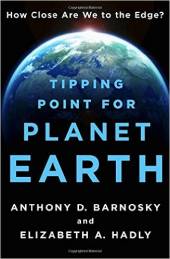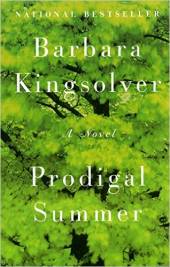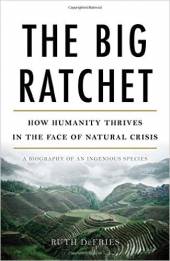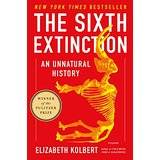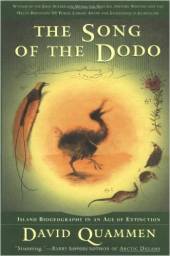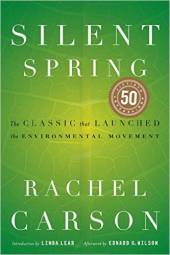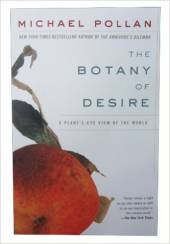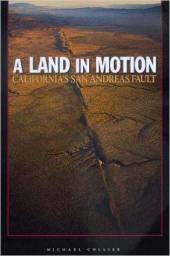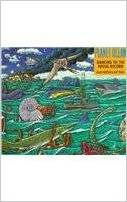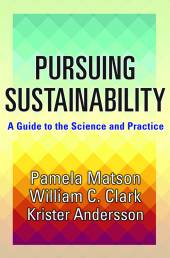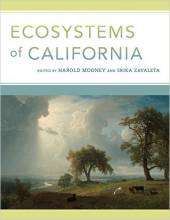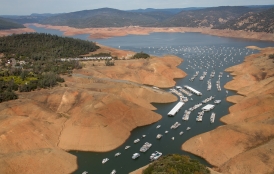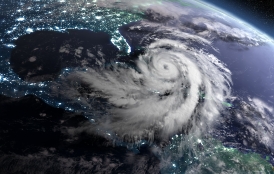The Stanford School of Earth, Energy & Environmental Sciences is now part of the Stanford Doerr School of Sustainability.
This page is currently being maintained for archival purposes only. For the latest information, please visit us here.
A Summer Reading List on Earth
It’s that time of year. Lie on the beach, jump on a plane to an exotic place, or just settle in on the chaise in the back yard — with a good book. Slow down, read, learn, enjoy.
By
Barbara Buell
June 27, 2016

Based on recommendations from some of our faculty and teaching staff, here is a (non-exhaustive) list of books about Earth’s beauty, its resources, and its challenges that you may want to catch up on this summer – or recommend as inspiration to a young person interested in the sciences. Read on and, not surprisingly, you will find some Stanford and Stanford Earth connections.
Tipping Point for Planet Earth: How close are we to the edge?
by Anthony Barnosky and Liz Hadly
Anthony Barnosky and Liz Hadly, a Stanford environmental biology professor, present a call to action about our planet’s failing life support systems.
Thomas Dunne Books, 2016
Prodigal Summer
by Barbara Kingsolver
Barbara Kingsolver’s fifth novel addresses the struggle between humans and the natural world. Set in Appalachia, the book focuses on three stories of human love, as well as the ecological damage caused by herbicides, ethical questions about raising tobacco, and the endangered condition of subsistence farming.
Harper Perennial, 2001
Lentil Underground: Renegade Farmers and the Future of Food in America
by Liz Carlisle
Stanford Earth lecturer Liz Carlisle tells the story of a little known group of renegade farmers who defied corporate agribusiness by launching a unique sustainable farm-to-table food movement.
Avery, 2015
Big Ratchet: How Humanity Thrives in the Face of Natural Crisis
by Ruth DeFries
Columbia professor and MacArthur fellow Ruth DeFries explains the innovations that have taken us from foragers on the savannahs to producers of 3000 calories of food daily for 7 billion people. The Big Ratchet came with 20th century technologies like fossil fuels, plant breeding, and nitrogen fertilizers that drove population and food production. She helps us understand how we reached this point in history -- and how we might survive it.
Basic Books, 2014
The Sixth Extinction: An Unnatural History
by Elizabeth Kolbert
Journalist Elizabeth Kolbert wrote this New York Times best seller which weaves science, historical context, and tales from the field to build a case that the sixth mass extinction of life on Earth is already underway.
Picador, 2015
Painting at the Edge of the World: The watercolors of Tony Foster
by Tony Foster
Watercolorist Tony Foster camps for days and creates huge paintings of geologically compelling formations: canyons, volcanoes, mountains, and more. Foster combines his art with inspiring stories that make interdisciplinary Earth science and art connections. His paintings also are on view at the Foster Art and Wilderness Foundation in Palo Alto through December 2016.
Venture Press, 2008
Game Changers: Energy on the Move
by George Shultz and Robert Armstrong
Former Secretary of State and Hoover Institution Distinguished Fellow George Shultz and Robert Armstrong describe energy innovations that will transform our future: natural gas from shale, solar photovoltaics, grid-scale electricity storage, electric cars, and LED lighting. They also show how extreme energy reliability demands put the U.S. military in the lead of energy innovation.
Hoover Institution Press, 2014
Angle of Repose
by Wallace Stegner
This novel is Wallace Stegner’s Pulitzer Prize-winning story of personal, historical, and geographic discovery. In 1998, Modern Library ranked it one of the 100 best English-language novels of the 20th century.
Doubleday, 1971
The Earth Remains Forever
by Rob Jackson
Stanford Earth professor Rob Jackson argues that we're at a crucial turning point in environmental history, where choices we make now will determine the future quality of life. Laying out the scientific facts in plain language, he shows how population growth and resource consumption have caused problems from ozone depletion to global warming, habitat destruction, and biodiversity loss. But he also highlights ongoing solutions. His message is not that we've already failed, but that we can succeed.
University of Texas Press, 2002
Song of the Dodo
by David Quammen
David Quammen takes readers through the ideas and experiments of naturalists of the last two centuries. He tracks the subject of island biogeography, which encompasses the origin and extinction of all species. He shows us the nature of evolution and extinction, and helps the reader understand the monumental diversity of our planet, and the importance of preserving its wild landscapes, animals, and plants.
Scribner, 1997
Silent Spring
by Rachel Carson
Rachel Carson wrote the seminal book on ecology that triggered the Earth movement in the 1960s.
Houghton Mifflin, 2002 (originally published 1962)
Botany of Desire
by Michael Pollan
Food expert and New York Times best seller Michael Pollan shows how people and domesticated plants have formed a reciprocal relationship. He links four fundamental human desires―sweetness, beauty, intoxication, and control―with the plants that satisfy them.
Random House, 2002
Beyond Smoke and Mirrors: Climate Change and Energy (second edition)
by Burton Richter
A Nobel Prize winning Stanford physicist and former director of the Stanford Linear Accelerator Center, Burton Richter surveys the evidence for climate change and available energy sources. The San Francisco Chronicle called his book "a model of rational discourse in this time of inflammatory arguments."
Cambridge University Press, 2014
Science as a Contact Sport: Inside the Battle to Save Earth’s Climate
by Stephen Schneider
Called a “climate warrior” by the New York Times, Stanford biologist Stephen Schneider was part of the Nobel Prize–winning team that shared the accolade with Al Gore in 2007 (along with Stanford Earth dean Pam Matson). Schneider, who was a major voice in the political and scientific climate discussion until his death in 2010, gives an insider’s look at 30 years of climate science, history, and debate in this book.
National Geographic, 2009
A Land in Motion: California's San Andreas Fault
by Michael Collier
Photographer and writer Michael Collier, a Stanford Earth MS graduate in structural geology, beautifully illustrates this book about California’s big fault with photographs from the air and ground. He writes about some of the geologists who have spent parts of their careers studying it.
University of California Press, 1999
Planet Ocean: A story of life, sea and dancing to the fossil record
by Ray Troll
Ray Troll authored this pop-paleontology book, which takes a unorthodox excursion through swaths of paleontology, geology, and natural history. His travel notes and amateur fieldwork from Kansas to British Columbia explain human evolution through a series of mass extinctions and improbable survivals. The book includes wacky cartoons and colorful, mixed-media drawings.
10-Speed Press, 1998
For Professionals and Students
Pursuing Sustainability: A Guide to the Science and Practice
Pamela Matson, dean of Stanford’s School of Earth, Energy and Environmental Sciences, and her coauthors William Clark and Krister Andersson believe the well-being of future generations depends on Earth’s natural capital -- ecosystems, environmental processes, and natural resources – as well as the human social systems necessary to manage them well. The book is a primer for both students and practitioners who are seeking a more systematic and comprehensive platform on which to base their pursuits of sustainability.
Princeton University Press, 2016
Ecosystems of California
by Hal Mooney and Erika Zavaleta
Edited by Stanford environmental biologist Hal Mooney and Erika Zavaleta, Ecosystems of California is a reference book about California’s ecology for students and professionals interested in natural resource management or conservation.
University of California Press, 2016
If you have a favorite book about Earth you would like to recommend, email bbuell@stanford.edu with a sentence or two on why you like it.


